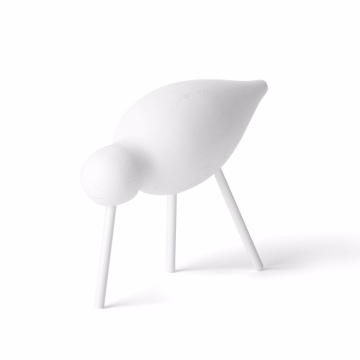Exploring the Marvels of Ancient Architecture in Rome
A Brief History of Ancient Roman Architecture
Ancient Roman architecture is a testament to the ingenuity and artistic vision of a civilization that profoundly influenced construction techniques, artistic styles, and engineering marvels throughout history. The evolution of this architectural style can be traced back to the early Roman Republic (509-27 BC), during which functional structures such as temples, basilicas, and forum buildings were primarily influenced by Etruscan and Greek designs. This period laid the groundwork for what would later emerge as a distinctly Roman architectural identity.
With the onset of the Roman Empire (27 BC-476 AD), architectural styles and techniques evolved significantly. Innovative materials such as concrete became widely used, allowing for greater structural creativity and durability. The incorporation of concrete enabled Romans to challenge traditional limitations, which subsequently facilitated the construction of monumental structures, including the iconic Colosseum. This arena, primarily used for public spectacles and gladiator contests, showcases the grandeur and complexity of Roman engineering, incorporating a series of arches and vaults to support its massive scale.
Additionally, the influence of Greek architecture remained prominent throughout this period. The adoption of the Corinthian and Ionic orders exemplified the Romans’ reverence for Greek aesthetics, culminating in the creation of magnificent temples such as the Pantheon. This structure is particularly noteworthy for its vast domed ceiling, which was a groundbreaking engineering achievement of its time.
Moreover, the construction of aqueducts revolutionized urban infrastructure, highlighting Rome's engineering prowess. These aqueducts not only supplied water to the expanding population but also exemplified the Romans' advanced understanding of hydraulics, showcasing their ability to blend functionality with grand design. The legacy of ancient Roman architecture ultimately paved the way for future architectural movements, leaving an indelible mark on the landscape of Western civilization.
Must-See Ancient Architectural Wonders in Rome
Rome is a treasure trove of ancient architecture, boasting a plethora of iconic landmarks that reflect its rich history and cultural heritage. Among these magnificent sites, the Colosseum stands as a symbol of Roman engineering. Constructed between AD 70-80, this amphitheater could hold up to 80,000 spectators, showcasing the prowess of Roman builders. Its intricate system of vaults and arches not only provided structural stability but also facilitated the complex games that entertained the masses. Visitors can explore the arena's underground chambers and learn about its tumultuous past.
Next on the list is the Roman Forum, which served as the heart of ancient Rome's public life. This sprawling site features the ruins of several important government buildings and temples. Walking through the Forum, one can appreciate the architectural innovation of the time, as different styles evolved to suit specific purposes. To avoid large crowds, early morning or late afternoon visits are recommended, allowing for a more intimate experience with the remnants of Roman civilization.
The Pantheon, with its stunning dome and oculus, is another must-see. Originally built as a temple to the gods, the Pantheon has been remarkably preserved since AD 126. Its innovative use of concrete and the harmonious proportions make it a masterpiece of ancient architecture. Visitors should take the opportunity to admire the light streaming through the oculus, creating an ethereal atmosphere inside.
Trajan's Market, often regarded as the world's oldest shopping mall, highlights the commercial spirit of ancient Rome. Built around AD 100-110, it features a series of interconnected buildings and streets. The site offers insights into the daily life of Romans and their architectural tastes. Lastly, the Baths of Caracalla, once a grand complex for leisure and socializing, showcases the scale and luxury of Roman bathhouses with its intricate mosaics and imposing columns. Planning a visit during weekdays can help in minimizing the crowds, allowing for a more enjoyable exploration of these historical wonders.
Tips for Enjoying Your Architectural Journey in Rome
Exploring the ancient architecture of Rome is truly a magnificent experience, and there are several ways to enhance your visit. First and foremost, consider participating in guided tours. These tours offer invaluable insights from knowledgeable guides who can provide historical context and intriguing anecdotes about various structures, such as the Colosseum and the Pantheon. For those who prefer flexibility, audio guides can serve as an excellent alternative, allowing you to explore at your own pace while still gaining a deeper understanding of the architecture.
Before your journey, it is advisable to conduct some research into the historical significance of the famous sites you plan to visit. Familiarizing yourself with their backstories can not only enrich your visits but also ignite a deeper appreciation for the intricate designs and craftsmanship involved in their construction. Additionally, engaging with local experts, be it archaeologists or historians, can offer a unique perspective, as they often share lesser-known details that can enhance your overall experience.
Photography enthusiasts will also want to capture Rome’s architectural wonders. Identify the best viewpoints for stunning images; for example, the Roman Forum offers a breathtaking panorama of ancient ruins. Consider visiting during the early morning or late afternoon for the best natural light. While photography is important, remember to immerse yourself fully in the experience and absorb the atmosphere surrounding these historic sites.
Lastly, complement your architectural journey with visits to local eateries and shops. These establishments often provide a taste of traditional Roman cuisine and the opportunity to buy unique souvenirs. After a long day of exploration, stopping by a quaint café or trattoria can be the perfect way to unwind and reflect on your experiences amidst Rome's architectural marvels.
The Cultural Impact of Roman Architecture Today
Ancient Roman architecture has significantly influenced modern design, creating a lasting legacy that transcends time. The principles and styles developed during the Roman Empire have permeated through centuries, shaping not only individual structures but also the broader context of urban planning. One of the most notable features of Roman architecture is the use of arched structures and vaults, which allowed for expansive and open interior spaces. This innovative approach can be seen in contemporary buildings, where architects frequently employ arches to create aesthetic and functional advantages.
Moreover, Roman architecture introduced the idea of monumentalism, where structures are designed to convey power and permanence. Today, many government buildings, courthouses, and museums draw from this aesthetic, featuring grand facades and expansive staircases reminiscent of ancient temples. The influence extends to civic spaces as well, where plazas and public squares echo Roman forums, enhancing community engagement and social interaction in urban environments.
Furthermore, the preservation of ancient Roman sites plays a crucial role in education and tourism. These historic structures serve as tangible links to our past, providing insights into the engineering, social, and cultural practices of ancient Rome. By maintaining sites like the Colosseum and the Pantheon, we enable future generations to appreciate the ingenuity of Roman architecture. These locations not only educate visitors but also attract millions of tourists each year, fueling local economies and fostering a sense of pride in cultural heritage.
In conclusion, the impact of Roman architecture is far-reaching. Its enduring relevance in modern design and community planning emphasizes the importance of historical structures, reminding us of their connections to our contemporary society. This appreciation encourages us to advocate for the preservation of these architectural marvels, ensuring their legacy continues to inspire future generations.






